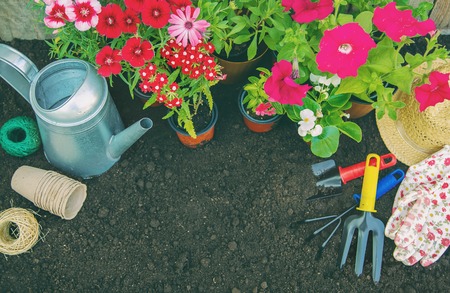Understanding British Allotment Soil
One of the first considerations for successful seasonal composting on a British allotment is understanding the unique character of your soil. Across the UK, allotment soils vary considerably—ranging from heavy clay and fertile loam to lighter, more alkaline chalk. Each type presents its own set of opportunities and challenges when it comes to composting strategy. For instance, clay soils tend to retain moisture but can become waterlogged, which may slow down decomposition in compost heaps; in contrast, loamy soils are well-balanced and offer excellent drainage and nutrient content, making them ideal for both composting and cultivation. Chalky soils, found in areas like the South Downs, are free-draining and often alkaline, which influences what you can add to your heap to maintain the right pH balance. Recognising your plot’s underlying soil type is essential, as it will guide how you build and manage your compost throughout the changing British seasons. Tailoring your approach—whether that means adjusting the green-to-brown ratio or managing moisture more carefully—will help ensure that your compost is well-suited for enriching your particular patch of earth.
Spring Composting: Kick-starting the Heap
As British allotment growers emerge from winter, spring marks a crucial period to revitalise your compost heap. With longer days and rising temperatures, microbial activity in your compost bin naturally accelerates, offering the perfect opportunity to set the foundation for nutrient-rich compost later in the year.
Turning Your Compost for Aeration
One of the key spring tasks is turning your compost heap. Use a garden fork to thoroughly mix the contents, ensuring oxygen reaches all areas. This promotes faster decomposition and helps prevent unpleasant odours. If you have more than one bin, consider transferring material between them—an efficient method favoured by many UK allotmenteers.
Incorporating Fresh Spring Materials
Spring brings a flush of prunings from fruit bushes and trees, as well as the first mowings of the lawn. Both are valuable additions, but balance is essential:
| Material | Type | Composting Tip |
|---|---|---|
| Grass Clippings | Green (Nitrogen-rich) | Add in thin layers to avoid matting; mix with woody prunings. |
| Prunings (e.g., currant, gooseberry) | Brown (Carbon-rich) | Chop finely for quicker breakdown; mix with softer greens. |
| Kitehen peelings | Green (Nitrogen-rich) | Alternate with drier materials like shredded cardboard. |
Managing Moisture as Temperatures Rise
The unpredictable British weather means moisture management is vital in spring. Compost should be as damp as a wrung-out sponge. If a dry spell hits, lightly water your heap. Conversely, if rain persists, cover your compost with an old carpet or tarp to prevent saturation—a common tip shared on UK allotment forums.
Checklist for Spring Compost Maintenance
- Turn and aerate heap weekly or fortnightly.
- Add alternating layers of greens and browns as new materials become available.
- Monitor moisture levels and adjust as needed.
- Chop bulky prunings before adding.
- Avoid adding perennial weeds or diseased material at this time.
Summary
Tending your compost heap in spring sets you up for success through the growing season. By turning the pile, incorporating seasonal waste mindfully, and managing moisture, you’ll encourage a thriving ecosystem that transforms waste into a valuable resource for your British allotment beds.

3. Summer Maintenance: Managing Moisture and Aeration
During the British summer, allotment compost heaps can quickly dry out, especially during spells of hot weather or drought. Maintaining the right moisture level is crucial for efficient decomposition. To keep your heap moist, consider adding water when turning your compost—aim for a texture similar to a wrung-out sponge. Using collected rainwater is both sustainable and gentle on your heap. Covering your pile with old carpet or cardboard helps retain moisture while still allowing air to circulate.
Balance is also key in the summer months. With gardens in full swing, there’s often an abundance of grass clippings and green kitchen waste. These “greens” are high in nitrogen but need to be balanced with “browns”—such as shredded cardboard, straw, and woody prunings—to avoid a soggy, smelly heap. Aim for roughly equal parts by volume; layering greens and browns as you add them makes mixing easier later on.
Regular turning is another vital summer task. Aerating your compost every couple of weeks encourages faster breakdown and prevents anaerobic conditions, which can lead to odours. Use a garden fork or compost aerator tool to mix materials thoroughly and bring outer layers into the centre. This hands-on approach not only improves airflow but also gives you a chance to check moisture levels and adjust as needed.
4. Autumn Additions: Leaf Mould and Harvest Residue
Autumn on British allotments brings a bounty of organic matter ideal for composting, particularly fallen leaves and the remains of harvested crops. Rather than viewing these as garden waste, allotment holders can turn them into valuable resources to enrich soil health for the next growing season. Understanding how to handle autumn materials ensures you make the most of what this season offers.
Utilising Fallen Leaves
Fallen leaves are a fantastic carbon-rich material, but they decompose slowly if simply added to a standard compost heap. For best results, create dedicated leaf mould piles alongside your main compost bin. Leaf mould is produced through fungal rather than bacterial activity, resulting in a crumbly, moisture-retentive soil conditioner after a year or two.
Steps for Building a Leaf Mould Pile
- Collect leaves from lawns and paths using a rake or leaf blower.
- Shred larger leaves if possible to speed up decomposition.
- Pile leaves in a wire mesh enclosure or large hessian sack to allow airflow.
- Dampen the pile if dry, and turn it occasionally over winter.
Harvest Residue: What to Compost and What to Avoid
The end of summer harvests generates plenty of spent plant matter. Most crop residues—such as pea and bean vines, brassica stems, and outer cabbage leaves—can be chopped and layered into your main compost heap. However, avoid adding diseased material or tough roots like perennial weeds, which may survive the composting process.
| Material | Add to Compost? | Notes |
|---|---|---|
| Pea & Bean Stems | Yes | Chop finely for faster breakdown |
| Cabbage Leaves | Yes | Avoid any with clubroot |
| Tomato Plants | Cautious | Avoid if blight present |
| Diseased Material | No | Bury or dispose separately |
| Perennial Weeds (roots) | No | Can regrow in compost; avoid adding |
| Leaf Litter (autumn) | Best in leaf mould pile | Slow to break down in regular heap |
Benefits of Separate Leaf Mould Piles
- Keeps the main compost heap balanced by reducing excess carbon-heavy material.
- Produces a fine mulch ideal for improving soil structure and water retention on allotment beds.
- Reduces reliance on imported soil conditioners.
Key Takeaway:
By making use of both fallen leaves and harvest residue through thoughtful separation and processing, British allotment growers can maintain productive compost systems while creating superb home-grown soil amendments tailored for local conditions.
5. Winter Rest: Insulating and Planning Ahead
As winter settles over British allotments, composting enters a quieter phase. Cold snaps can bring challenges, but with thoughtful preparation, your compost heap will emerge in spring ready for action. First, insulate your compost pile to shield it from frost and biting winds. A simple method is to cover the heap with old carpet, hessian sacks, or a thick layer of straw—materials commonly found or repurposed on UK plots. These coverings help retain warmth and prevent excessive moisture loss, supporting the microbial activity that continues, albeit slowly, beneath the surface.
Check that your compost bin or heap isn’t waterlogged after heavy rain; good drainage is crucial during damp British winters. If using plastic bins, ensure ventilation holes are clear to prevent stagnation while still keeping out excess rainwater. For open heaps, consider adding a temporary windbreak made from reclaimed timber or woven willow panels—both sustainable options favoured by many local growers.
Now is also the perfect time to plan ahead for the coming year’s composting needs. Take stock of how much finished compost you have versus what you expect to use in early spring for mulching or soil improvement. Make notes on what went well this year and where improvements could be made, such as increasing green waste sources or managing woody prunings more efficiently. Some plot holders like to start collecting leaves in autumn and bagging them up for leaf mould—a slow but rewarding process that complements standard composting.
Winter offers a chance to review your system and make adjustments before the busy months return. Whether you’re new to allotment gardening or an experienced hand, winter rest is less about stopping and more about preparing thoughtfully for next season’s success.
6. Common UK Composting Challenges and Solutions
Identifying Typical Problems on British Allotments
Even the most seasoned allotment holders run into composting hiccups, especially in the variable British climate. Common issues include slugs invading heaps, rodents making a home, and the ever-present challenge of excess moisture—particularly during our famously wet months. Recognising these obstacles is the first step to crafting a resilient composting routine.
Slugs: Persistent Pests in Damp Conditions
Slugs are notorious for exploiting damp compost bins, particularly when the weather turns wet. They feast on kitchen scraps and can multiply quickly if unchecked. To deter them, avoid adding bread or cooked food to your heap and regularly turn the pile to disrupt their habitat. Sprinkling a barrier of crushed eggshells or horticultural grit around the base can also help keep them at bay.
Rodents: Unwelcome Visitors
Rats and mice are drawn to easily accessible food waste. In urban and rural settings alike, they may burrow into uncovered heaps. Use a closed compost bin with a secure lid, avoid adding meat, dairy, or oily foods, and line the bottom with fine mesh if rodents persist. Regularly turning your compost also discourages nesting.
Excess Wetness: Managing Moisture in the British Climate
The UKs rainfall can quickly saturate open heaps, leading to anaerobic conditions and unpleasant odours. To prevent this, balance green (nitrogen-rich) materials like grass clippings with brown (carbon-rich) materials such as shredded newspaper or autumn leaves. Cover your heap with tarpaulin or a dedicated lid during heavy rain, and consider elevating bins on pallets for better drainage.
Locally Relevant Solutions for Resilient Composting
Every region across Britain presents unique challenges—from persistent drizzle in the North West to unexpected warm spells down South. Adapt your approach seasonally: insulate bins with old carpet offcuts in winter, monitor moisture more closely during prolonged wet spells, and make use of locally available browns like bracken or straw from nearby farms. By staying vigilant and adjusting methods to local conditions, allotment growers can overcome common composting challenges and produce nutrient-rich compost year-round.


